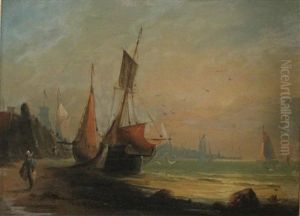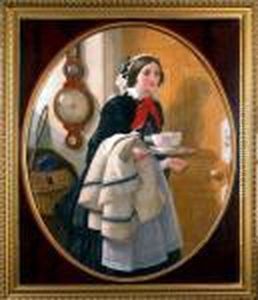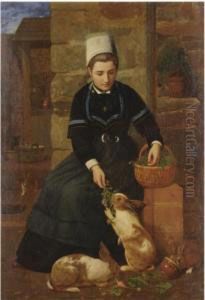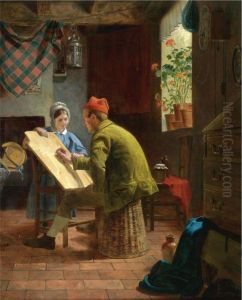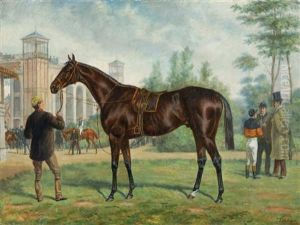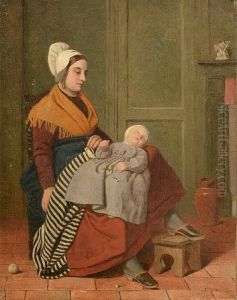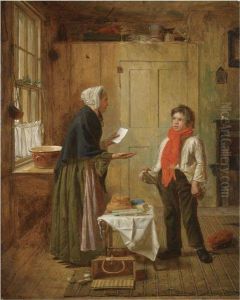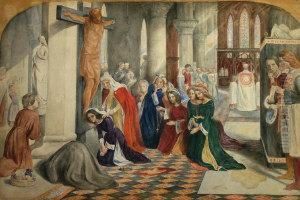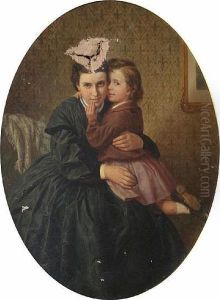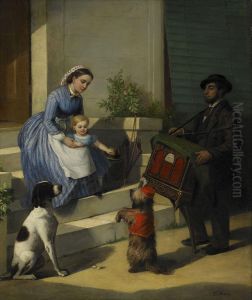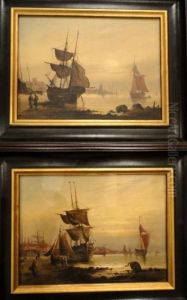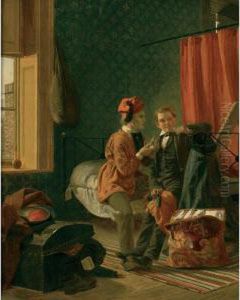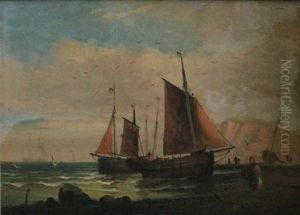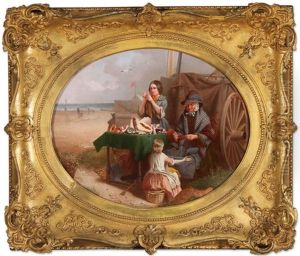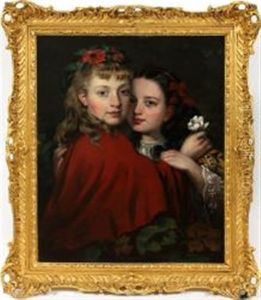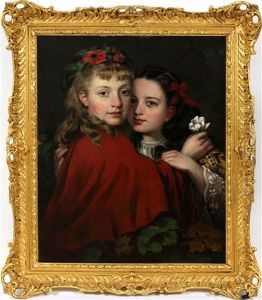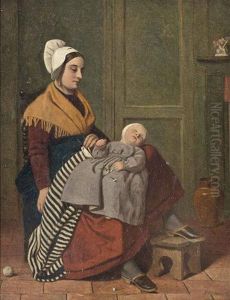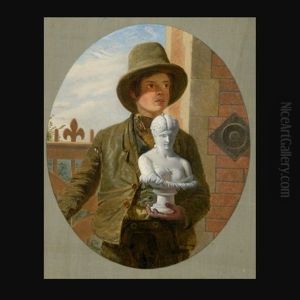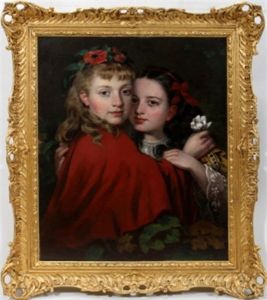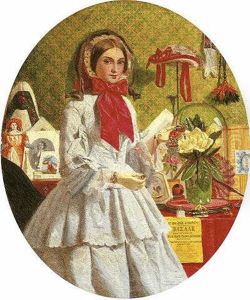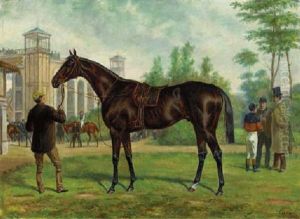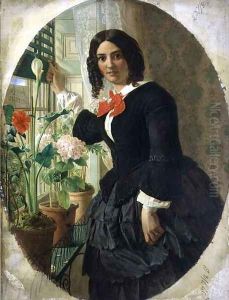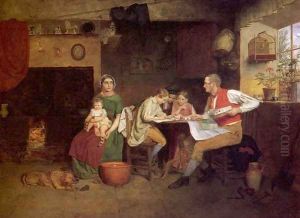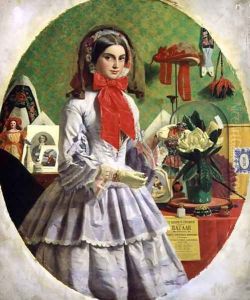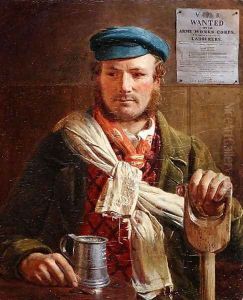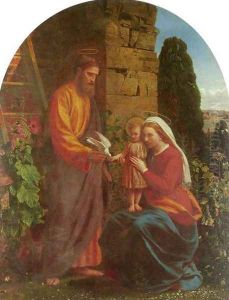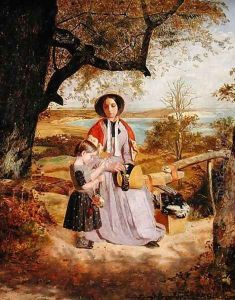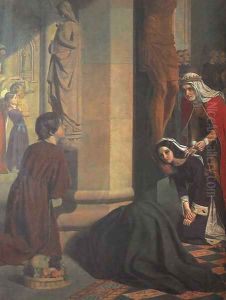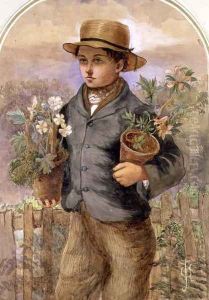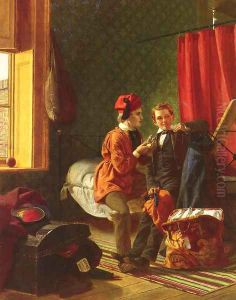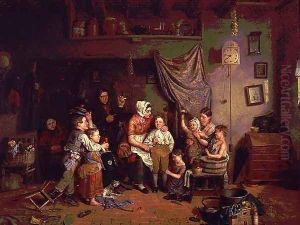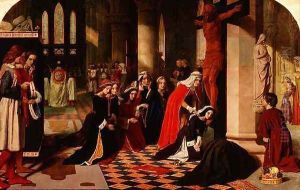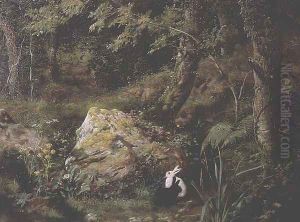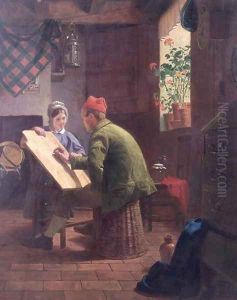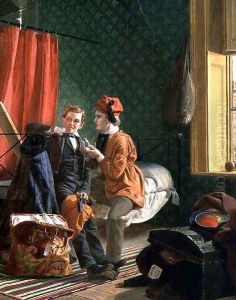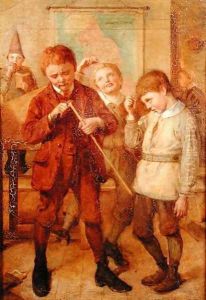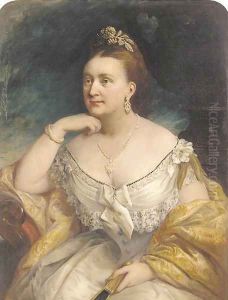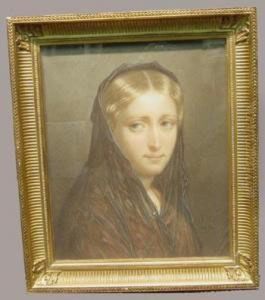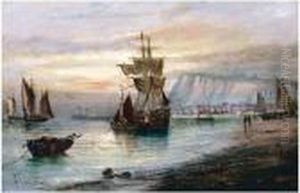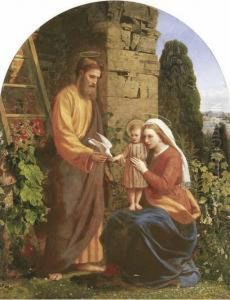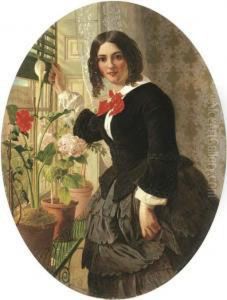James Collinson Paintings
James Collinson was a 19th-century English painter who was born on May 9, 1825, in Mansfield, Nottinghamshire. He is primarily known for his involvement with the Pre-Raphaelite Brotherhood, a group of English painters, poets, and critics, founded in 1848 by William Holman Hunt, John Everett Millais, and Dante Gabriel Rossetti. The Brotherhood's intention was to reform art by rejecting what it considered the mechanistic approach first adopted by the Mannerist artists who succeeded Raphael and Michelangelo. They believed in a return to the abundant detail, intense colors, and complex compositions of Quattrocento Italian and Flemish art.
Collinson was an original member of the Brotherhood, which also briefly included the artists Thomas Woolner and Frederic George Stephens, and the art critic John Ruskin, who was a substantial patron. His association with the Brotherhood, particularly with Rossetti, brought him into the spotlight of the Victorian art world. Collinson's painting style was characterized by its meticulous attention to detail and vibrant colors, typical of the Pre-Raphaelite aesthetic.
However, his tenure with the Brotherhood was short-lived. Collinson resigned from the group in 1850, upon his engagement to Christina Rossetti, the sister of Dante Gabriel Rossetti. This engagement was later broken off, and Collinson's association with the Brotherhood did not continue. After his departure from the Brotherhood, he pursued a career as a genre painter, illustrating domestic and religious life with a softer style compared to his earlier Pre-Raphaelite work.
Throughout his career, Collinson struggled with health issues and a lack of critical acclaim. Despite his early promise and his association with one of the most dynamic art movements of the Victorian era, he did not achieve the same level of success as some of his contemporaries. Collinson continued to paint and exhibit his work at the Royal Academy and other venues, but his contributions to art were largely overshadowed by the more prominent members of the Brotherhood.
James Collinson died on January 24, 1881, in London. His work has since been reassessed, and he is now recognized for his role in the Pre-Raphaelite movement and his contribution to Victorian art. Although not as well-known as his contemporaries, Collinson's paintings are appreciated for their detail, color, and adherence to the early principles of the Pre-Raphaelite Brotherhood.
